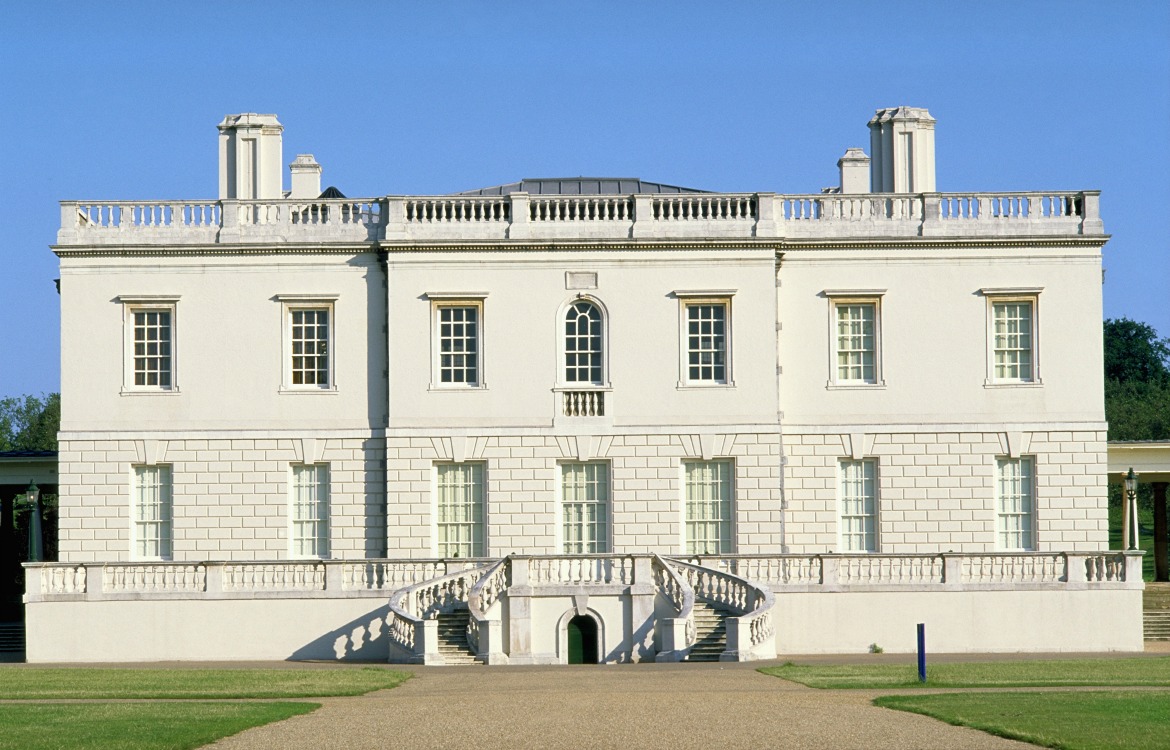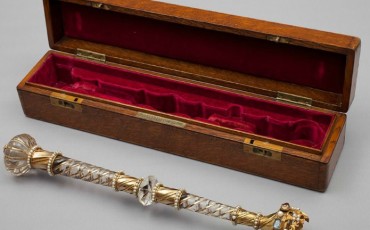At the end of February, Turner Prize winner Richard Wright started on a new artwork for the Queen’s House, part of the Royal Museums Greenwich. This is the first time an artist has worked on the ceiling of the Great Hall since Orazio Gentileschi created a series of nine paintings in 1639. Richard’s complex installation, inspired by the Tulip Stairs, will be on view when the Queen’s House re-opens after restoration on 4 July 2016 to celebrate the 400th anniversary of its commissioning and design. Visitors will also be able to see Orazio Gentileschi’s Joseph and Potiphar’s Wife displayed in this building for the first time since 1650. The painting, which is part of the Royal Collection, was one of a sequence commissioned for the Queen’s House in Greenwich by King Charles I and Queen Henrietta Maria.
The ceiling in the King’s Presence Chamber will be restored to its royal splendour, complementing the Queen’s Presence Chamber which was restored in 2013. Both rooms will have a bold new colour on the walls, bright blue for the King’s and bright red for the Queen’s, as befits their 17th-century majesty.
These rooms will be adorned with paintings illustrating the kings, queens, consorts and courtiers associated with the House and Greenwich during this period, including Charles I and Henrietta Maria by Daniel Mytens, also generously loaned from the Royal Collection by Her Majesty The Queen.
Finding inspiration in the Queen House’s past, the re-displays will also capitalise on the great strengths of the National Maritime Museum’s world-class art collection, along with significant loans from both public and private collections. The displays and interpretation will chart the changing relationship between the Queen’s House, the people who created it and those who lived and worked there, from royalty and courtiers to the Navy.
 A view of the Queen’s House in Greenwich, part of the Royal Museums Greenwich in London. Photo Credit: ©Royal Museums Greenwich.
A view of the Queen’s House in Greenwich, part of the Royal Museums Greenwich in London. Photo Credit: ©Royal Museums Greenwich.
9 Facts About The Queen’s House In Greenwich
- The famous English architect Inigo Jones designed the Queen’s House, inspired by his travels in Italy. It is widely known as the first Classical building in England.
- The Queen’s House was commissioned by James I’s wife Anne of Denmark. She had reportedly been given the manor of Greenwich after he swore in front of her when she accidentally killed his favourite hunting dog.
- Anne of Denmark never got to see her vision for the house fulfilled – she died in 1619 before the ground floor was completed.
- It was under the direction of Charles I’s wife, Henrietta Maria, that the building was finally finished, around 1638.
- Inigo Jones’s original design features can still be seen in the Great Hall, which is a perfect cube in shape, and the Tulip Stairs, as well as the distinctive marble flooring
with its black and white, geometric pattern. - The English Civil War saw Henrietta Maria flee the country in 1643 and when her husband Charles I was executed in 1646, his estate – including artworks in the Queen’s House – was sold off.
- Charles II took an interest in Greenwich and the Queen’s House, extending the building, and renovating what became known as the Queen’s Presence Chamber.
- Queen Mary asked that the Royal Naval College not block the view from the Queen’s House to the Thames, a request taken into account by Sir Christopher Wren’s design for the building.
- The Queen’s House is famously thought to be haunted, after visiting tourists from Canada had their photographs developed and saw what appears to be a ghost (or ghosts) on the Tulip Stairs.







Leave a Reply